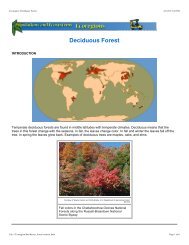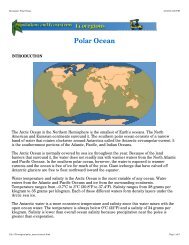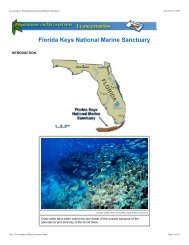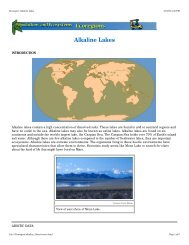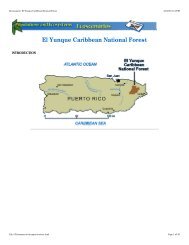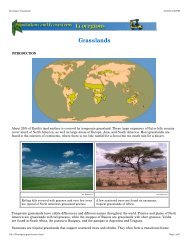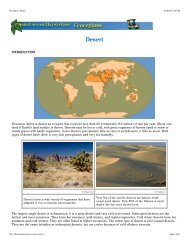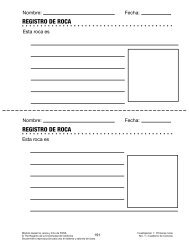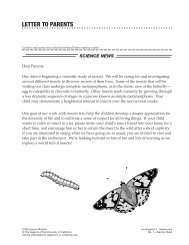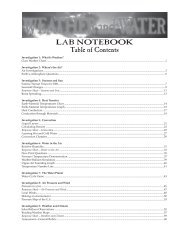Ecoscenarios Combined - FOSSweb
Ecoscenarios Combined - FOSSweb
Ecoscenarios Combined - FOSSweb
You also want an ePaper? Increase the reach of your titles
YUMPU automatically turns print PDFs into web optimized ePapers that Google loves.
Ecoscenario: Cimarron National Grasslands<br />
4/16/03 3:09 PM<br />
Courtesy of University of Nebraska Cooperative Extension<br />
Fires are now set in grasslands as part of<br />
management practices.<br />
Courtesy of University of Nebraska Cooperative Extension<br />
Prescribed grass fires are closely monitored to<br />
prevent uncontrolled burning.<br />
Fire policy<br />
Historically, the western United States was covered with huge areas of grassland. Native Americans used fire to<br />
stimulate grass growth and to herd bison. Early settlers used fire to clear land for agriculture. But after lands were<br />
cleared, fires were suppressed to protect crops and structures. Fire destroyed food sources and habitat for animals,<br />
which the public thought would be bad for the ecosystem. In 1935, the U.S. Forest Service set a goal of making<br />
sure all fires were out by 10 a.m. the following day. This disruption to the natural recycling of nutrients may have<br />
been one of the contributors to the depletion of the soil in the 1930s Dust Bowl.<br />
The suppression of fire also allows dead grasses and debris to build up. Woody trees and shrubs start to invade<br />
grasslands. This sets the stage for larger and hotter fires. Hot, intense fires destroy root systems and sterilize the<br />
soil. It may take many years for grasses to regrow and wildlife to return following an intensely hot fire.<br />
As the importance of fire was better understood, a policy called "back to nature" or "let it burn" was adopted by the<br />
U.S. Forest Service and the National Park Service. In this policy, forest and grassland fires were permitted to burn<br />
themselves out. Many Americans criticized this policy after one-third of Yellowstone National Park burned 1988.<br />
The park was allowed to burn for 4 months. The only firefighting efforts were to protect buildings and structures in<br />
the park.<br />
Better understanding of the grassland ecosystem has taught the U.S. Forest Service the importance of fire.<br />
Prescribed burning, planned and controlled, has increased over the last 40 years. This means that park managers<br />
set small, controllable fires. These fires reduce the buildup of fire fuel like dead plants. With this fuel gone, larger<br />
fires cannot spread as easily, and burn out more quickly. Prescribed burns can also help control non-native plant<br />
species and return vital nutrients to the soil.<br />
The fires that occur in Cimarron National Grassland are called stand-replacement fires. The fire kills only the aboveground<br />
parts of the plants. Introduced plant species with shallow root systems, not adapted to grasslands, are<br />
destroyed. These controlled fires also keep down the growth of woody plants. Without fires, trees and shrubs would<br />
slowly begin to appear on the prairie, and slowly convert it to woodland.<br />
In 2000, many wildfires burned out of control across the United States. These fires destroyed over 2.5 million<br />
hectares (6.3 million acres), mostly in Idaho and Montana. While it may seem that there are more wildfires burning<br />
in the United States than ever before, there are actually many fewer than in 1850. Overgrazing and fire suppression<br />
have led to dense thickets of trees and shrubs in some areas, which differ from the open forests and grasslands<br />
found before 1900.<br />
file:///Ecoscenario/cimarron/content.html<br />
Page 8 of 12



